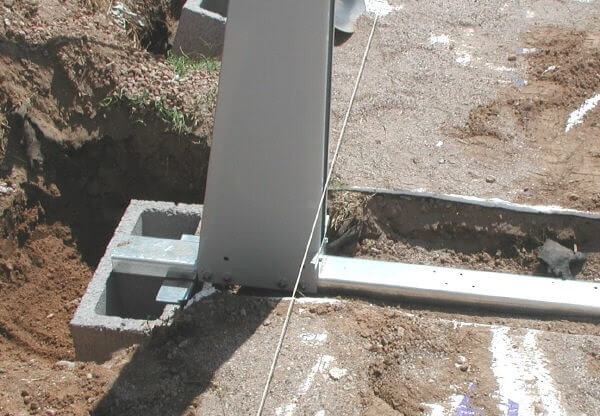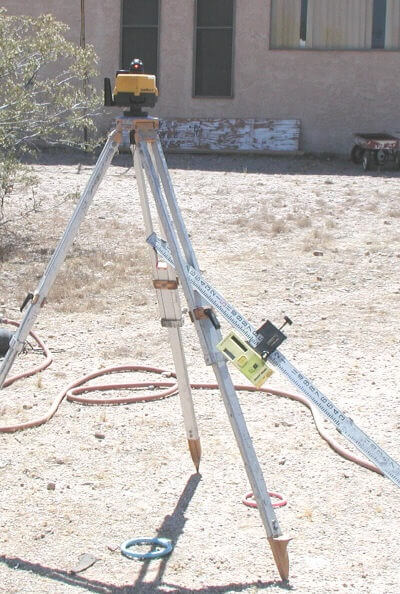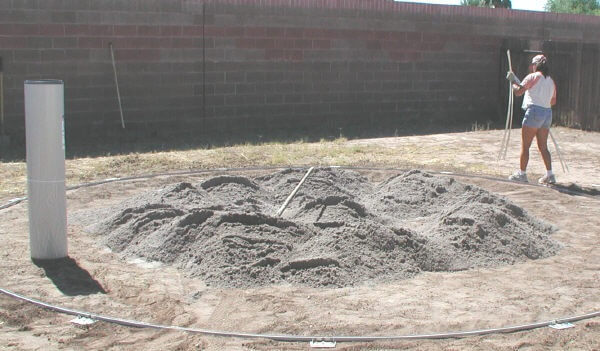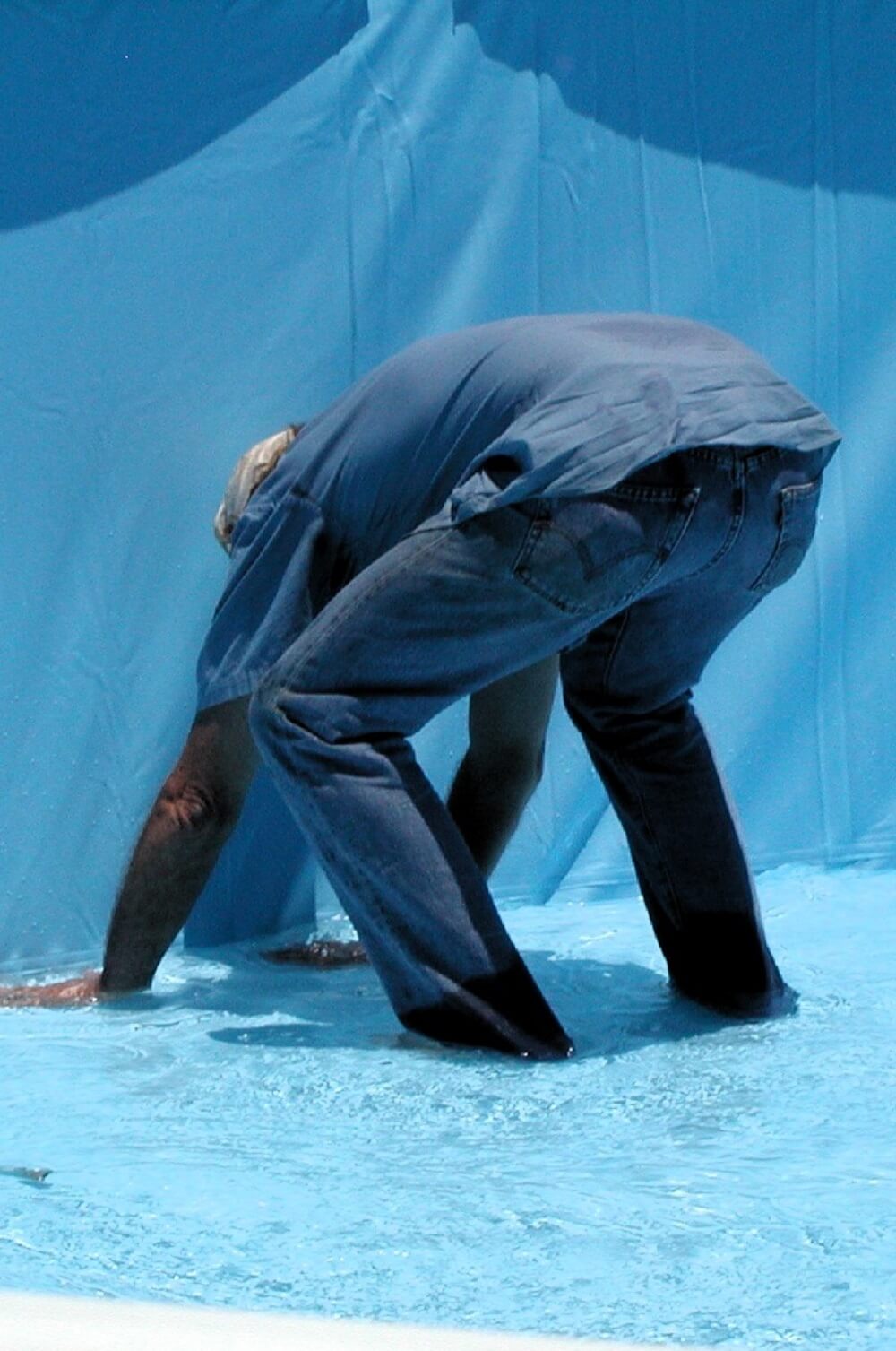Above Ground Pools FAQ
Pool Questions Answered
On this page of above ground pools FAQ I will cover subjects about holes in your vinyl liner, moving an above ground pool, installing a used liner and much more. For a complete list of questions about above ground swimming pools visit the questions index page. Many more above ground pool questions are answered in the ask the pool pro section.
46. How do you find holes in vinyl liners?
There are several ways to go about this. Examine the outside of the pool, are there any wet spots. With pools on top of the ground this is the first place to start. A wet spot would indicate the hole is near the edge in that area. Without a wet spot finding the hole is a little harder.
Getting in the pool with goggles is the next step. If you have a wet spot focus in that area. My method is to go to the bottom and move my hand over an area and then look closely for what will look like a piece of dirt that did not move. It might be the hole.
If there is no wet spot to narrow the search I walk the entire pool feeling for any soft spots in the sand, anything out of the normal. If that turns up nothing I do it again with my head under water and moving any dirt with my feet. Usually by now I have found the leak.
If you don't find anything this way you should drain the pool down to about 6". Examine it again very closely because you don't want to drain any more water out if you don't have to. Spend the most time looking around the cove area, where the bottom meets the wall. This is the most common place to get holes, usually caused by pool cleaners, and they are the ones that leak the most and cause wet spots around the outside of the pool. Around ladders and steps is common also, or any area where you have noticed the cleaner spending a lot of time sitting in one spot,
As a last resort you can completely drain the pool and remove a few top rails and crawl in behind the liner. From the underside the holes will shine through like stars. This is the only method I know of that will find all the holes in a liner. While you are under there it is a good time to apply the patch. If the liner is only a year or two old and you drain and refill in the same day you should be o-k. Your main concern with this method is liner shrinkage. Older liners could shrink quickly and not stretch back into place when refilling, causing the walls to cave in or the liner to pull out from the top. Liners with deep ends should never be completely drained, they won't stretch back into shape.
Other ideas from AI would include
- Visual inspection: Start by visually inspecting the liner for any tears, rips, or holes. Look for areas where the liner is sagging or appears to be stretched out of shape.
- Bucket test: Conduct a bucket test to determine if there is a leak in your pool. Fill a bucket with pool water to the same level as your pool, and mark the water level on the bucket. Place the bucket on the pool step or ledge and wait 24 hours. If the water level in the pool drops more than the water level in the bucket, there is a leak in the pool.
- Dye test: Add a small amount of food coloring or dye to the pool water near the suspected area of the leak. The dye will flow towards the hole or tear in the liner, allowing you to pinpoint the location of the leak.
Once you have located the hole or tear, you can patch it using a vinyl patch kit. Boxer brand is what I use and I prefer my patch to be from a piece of actual liner, not the clear stuff that comes with the patch kit. This can be used dry or underwater. It's important to repair holes or tears as soon as possible to prevent further damage to the liner, the base under it or the pool wall.
47. Should I use concrete blocks under the posts?

48. How far can my pool be off level and still be save?

49.Any advice for moving a pool?
Start by taking some pictures of the pool while it is still up. Taking more pictures as you are taking it apart could be a great help in the reinstallation process. Be careful not to leave any parts buried in the dirt or sand and try not to bend or break anything. Metal becomes very brittle when it starts to rust. Disconnect the wall coupling before rolling it up. Doing this without removing the nuts and bolts or wall bar makes it very difficult to roll up and can cause creases that may not come out. It is best not to try and reuse vinyl liners so there are no special considerations there. It is easier to move a sand filter if you first empty the sand. Starting the pool with a clean filter full of clean sand is a good idea. Be careful with the parts and have some help for the heavy lifting and you should be just fine.
50. What is the best type of landscaping for around my above ground pool?
Anything but grass. Grass will grow under the pool and up through the liner or up the wall between liner and pool, or up the inside of the uprights creating great habitat for bugs and wasps. I prefer some type of rock landscape and it is best to use plastic under it because the water splashing out of the pool makes any vegetation grow very quickly. Plants should only be container type plants. They are easy to move when changing liners and they don't grow roots under the pool.
51. How do I install a used liner?
I strongly recommend that you don't try. Liners will shrink and become brittle when left without water causing them to be very difficult to reinstall. If you really need to try, this is the only way I have found that works. With the wall up and the sand spread, unroll the liner inside the pool and attach to the wall using cloths pins. Line up the skimmer and return holes. Fasten the skimmer and return to the wall and make sure the liner below them is touching the sand. Go directly across the pool to the other side, make sure the bottom is touching the sand and see if there is enough liner to pull up and over the wall of the pool. If the liner won't fit at this point it is useless to continue. If things seem OK then start smoothing the bottom out, recheck all the cloths pins and start filling. As it fills you should continue to smooth the bottom. If the liner you are trying to reinstall is a beaded one it is probably not worth trying. Any shrinkage at all will cause the walls of your pool to cave in. If the liner is less than a year old and you do it on hot sunny day it might work, but be careful and make sure it is perfectly centered before starting the water.
52. Is it better to use more sand than recommended?

53. How do you feel about preformed pool cove and pool pads?
I love preformed pool cove for pools that are set up on concrete or tile. It is the best way to go. I love pool pads for the same applications. In a normal dirt yard situation the pool cove is a little difficult to work with because it is hard to get the ground perfectly smooth and level underneath the cove. With pool pads, they are so thin they take on the shape of the ground under them, so any little rocks or bumps will show through when the pool is filled and the pad is fully compressed.
The links below will take you to the rest of the questions with answers series.


Would you prefer to share this page with others by linking to it?